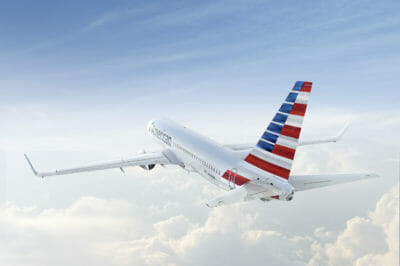I am the only person I know, other than online friends, who applies for lots of credit cards. Megan participates, but only because I handle all the details. Everyone else, including friends and family, see it as somewhat perverse behavior. Everything I was told about credit growing up (and at least I had someone teaching me about credit) was focused on keeping the number of accounts low, applications few, and balances minimal. Credit cards were not to be used for regular expenses like groceries. Heck, Megan’s parents won’t even use credit cards for restaurants if they can avoid it. A lot of people are very suspicious.
But as I explain on my page about managing your credit score, there really isn’t any reason you can’t maintain an excellent credit report at the same time you apply for a dozen or more cards each year, reaping huge bonuses that can be used for (almost) free travel. In fact, several excellent blogs focus heavily on this topic, including Mommy Points, Frequent Miler, The Points Guy, and Million Mile Secrets. While I don’t consider miles and points bonuses to be true “travel hacking” by themselves, I do think they are part of the travel hacking tool belt and should be used to supplement your account balances. In addition, some people just don’t have the resources or interest to travel on paid tickets very often, even if they could find some of the low-cost options as easily as I do. One or two hundred thousand bonus miles each year may be all they need to satisfy their travel needs.
For people with excellent credit, I think failing to apply for credit cards is a missed opportunity. You have the potential to get approved for almost any card you apply for, and if you have a steady income and can control your spending, there’s no reason you can’t get some extra miles for stuff you would buy anyway. My goal in this post is to provide newbies with a game plan for joining the club.
Good Credit is Very Important
First, make sure you have good credit, are careful with your money, and pay off your balances in full each month. Rewards credit cards have higher interest rates to make up for those benefits. The goal here is not to spend more than you would normally or find some other way to start behaving irresponsibly. Use a service like Credit Karma or Credit Sesame to get a free estimated credit score. You can also pay for an official credit score from the big three bureaus if you’re concerned that you might be on the border. Reconsider your ability to play this game if you have less than excellent credit (around a 750 FICO score).
Don’t Spend Money You Don’t Have
Second, estimate how much you can actually afford to charge on your credit cards each month. For a beginner, I would avoid schemes to pay your rent or taxes on a credit card since this often involves paying fees to a middleman. But do include groceries, coffee, parking, and anything else you can possibly buy. There are very few places that don’t accept credit cards for payment, and there really isn’t any reason why you should use cash or a debit card. Cash is gone as soon as you hand it over, and a debit card doesn’t carry the same level of fraud protection that a credit card does.
Don’t Collect Points You Won’t Use
Third, determine which miles and points make the most sense for your travel habits. Do you stay at cheaper hotels in small towns, like a Hilton Garden Inn? A Hyatt Visa probably doesn’t make sense for you because they have some of the fewest properties in the U.S. On the other hand, if you enjoy once-in-a-lifetime experiences, the Hyatt Visa will get you two free nights at any Hyatt hotel in the world, including Park Hyatts with rooms that cost over $500 a night. Even so, I don’t recommend this card for beginners because two nights is all you get, plus another (but category restricted) for each year you pay the annual fee.
If you want to get free flights, what kind of flying do you do or want to do? United has a strong presence in many of the cities I visit regularly, and its partners have hubs in international destinations I want to see in the future. I also already have elite status and would enjoy adding to my mileage balance. On the other hand, if you travel infrequently or just enjoy the culture of Southwest, their card may be better and provide more flexible redemption options. Some credit cards offer perks like elite status or free checked baggage, so determine if that additional value is something you’ll use.
Define Clear Rules to Guide Choices
Finally, with all these factors considered, determine which cards will allow you to reach the minimum spend thresholds. I think the SPG American Express card is great, but the requirement to spend $5,000 in six months is intimidating for someone with my income and spending habits. I only signed up for it because I knew I had a vacation coming up and would be able to charge some large purchases to the card. Otherwise my usual rule is to assume I will be able to charge $1,000 per month. The SPG Amex would still qualify, but it would mean I could only apply for a single card and focus on reaching its threshold for the next five to six months.
If you can afford to sign up for multiple cards at once, it’s usually better to do it on one day so that the credit inquiry from application A don’t reduce your score by the time you file application B. Still, spread the cards around so they aren’t all coming from the same bank or from the same credit bureau. Find out which credit bureau your bank will pull your record from using this database at Credit Boards.
The key to applying for credit cards is that you DO NOT keep the card for years and years. Save your existing cards and keep them open to maintain a high average account age, but cards with great churn potential are those for which you sign up and then dump before the annual fee kicks in. Make sure you keep the card for at least six months before dumping to avoid clawback rules that allow the bank to rescind your sign-up bonus. Some of these cards also include bonus points for various spending categories, but I will save that for future posts that recommend individual cards because I am assuming you are getting most of these for one-time bonuses. Whether you get an extra 500 points for buying groceries over three months is much less important than the size of the initial bonus.
With that information to guide your decision making process, here are some of my suggestions for a beginning credit card strategy:
Cards to Consider Right Now
Southwest Airlines Rapid Rewards Premier Visa from Chase
I don’t fly Southwest. Many people do, especially infrequent travelers. I can understand why, with the low-key attitude, friendly employees, and few fees. So if you’re part of the Southwest fan club, you should definitely get their credit card. The sign-up bonus is 50,000 points after your first purchase, which means there is no specific minimum spending requirement. With Southwest’s new Rapid Rewards program, the value of those points depends on the type of fare you purchase. Under ideal conditions, 50K points would give you $833 in Wanna Get Away fares.
- 50,000 Rapid Rewards points after first purchase
- No minimum spend
- Bonus points are worth up to $833 in airfare
- Annual fee of $99 is NOT waived in the first year, but it’s worth it for those points
- Additional 6,000 points each year after paying the fee (but worth up to $100)
- Combine with the Southwest Premier business card for a total of 100,000 Rapid Rewards points (we’re now up to $1,666 in redeemable value)
The biggest benefit of the Southwest Rapid Rewards program is the annual companion pass. If you can earn another 10K Rapid Rewards points through other means, you’ll have 110,000, you can designate someone to be your companion for the next year. When you book a ticket, he or she can travel on the same reservation for free. That means, …drumroll please… you can potentially get $3,332 in (almost) free tickets.
Remember, I haven’t tried this trick, and the loophole may be closed at some point, but my current understanding is that this opportunity still exists. Southwest’s site refers to “tier qualifying points” earned from “revenue flights and select … credit cards and are exclusive of bonuses…” when describing A-List and A-List Preferred status. These credit cards only offer up to 30,000 tier qualifying points after $30,000 spent (15K each). However, the description of the companion pass only mentions “qualifying points,” not “tier qualifying points,” and doesn’t have the same description of tier qualifying points at the bottom of the page.
Hawaiian Airlines Visa from Bank of America
(If you live in Hawaii, there is a separate card offer from Bank of Hawaii. Sorry, I guess you’re not part of America yet. 😉 )
I’m planning on including this card in my next application cycle as I start to accumulate Hilton HHonors points. You see, those Hawaiian Airlines miles aren’t really worth much to me. United has great service to Hawaii at reasonable prices, so I would rather pay for my tickets. But Hawaiian’s miles can be converted to Hilton HHonors points at a 1:2 ratio, meaning you would get 70,000 Hilton HHonors points. The spending threshold is also very low at only $1,000 over four months.
- 20,000 Hawaiian Airlines miles after first purchase, plus an additional 15,000 miles after spending $1,000 in four months
- Transfer to Hilton HHonors at 1:2 ratio
- Annual fee of $79 is NOT waived in the first year, but it’s worth it for those points
- Caution: Daraius at Million Mile Secrets warns that people with a poorer credit history may be given a Platinum instad of a Signature Visa card and will only earn 10K bonus miles.
Hilton HHonors American Express
In addition to the Hawaiian Airlines trick above, there are several Hilton HHonors credit cards out there. Rather than recommend all of them to a newbie, I suggest you start out with this one. The 70K points you’ll earn from an Hawaiian Airlines transfer is still the best, but this offer from Amex is a good way to add to that amount by spreading around your applications and has no annual fee. You’ll earn 60,000 HHonors points after spending only $750 in three months.
- 60,000 Hilton HHonors points after spending $750 in three months
- Free HHonors Silver status, with access to discounted award opportunities
- Earn HHonors Gold status if you spend $20,000 in a calendar year
- No annual fee
Priority Club Rewards Visa from Chase
Priority Club includes InterContinental Hotels and Holiday Inns, among other brands, so it may be a good choice if a lot of your stays are at a Holiday Inn in small towns, which are sometimes the only option. The public offer is for 60,000 bonus points after your first purchase with no minimum spend requirement, but there is also a link to a targeted offer for 80,000 points that may non-targeted individuals have had success with. Those miles will also go further with a rebate on award redemptions. The annual fee is waived for the first year, but you will receive a certificate for a free night each subsequent year when you renew your card, so it may be worth keeping.
- 60,000 (or 80,000) Priority Club points after your first purchase with no minimum spend
- Annual fee of $49 is waived for the first year
- Receive a free night voucher each year when you pay the annual fee
- 10% rebate on award redemptions
- Free Priority Club Gold status
American Airlines AAdvantage Visa, Business Visa, and American Express from Citi
Thanks again to Daraius at Million Mile Secrets for his excellent rundown of applying for multiple American Airlines credit cards to combine bonuses. To summarize, his two-browser trick requires that you open two browsers on your computer (say, Firefox and Chrome, or one regular Chrome and one incognito Chrome) and apply for the personal Visa and Amex cards at the same time in each window. Each card offers a 50,000 AAdvantage miles bonus after spending $2,500 in four months, so that’s $5,000 total in four months, a little over my $1,000 per month rule. But you earn 100,000 miles total. You can also apply again for the Business Visa after waiting 65 or more days to earn an additional 50,000 miles.
- 50,000 American AAdvantage miles after spending $2,500 in four months
- Also receive two one-day AAdmirals Club day passes (supposedly a $100 value)
- Annual fee of $85 is waived for the first year
Daraius also mentions a different offer for the Visa and Amex cards that provides the same number of miles as well as a $150 statement credit after an American Airlines purchase. However, you must spend $3,000 in four months on each card instead of $2,500. I think this may be pushing it for some, so I don’t recommend you do this unless you’re sure you can meet the requirements.
Sapphire Preferred from Chase
I’ve tried to limit the cards I recommend to newbies to those that have spending thresholds at or under $1,000 total, regardless of the timeline to meet them. However, if you’re feeling comfortable, I also recommend the Sapphire Preferred card from Chase. It requires that you spend $3,000 in three months, so it still meets my rough target of $1,000 per month, but I admit the higher target can seem more daunting. However, it has a lot of great benefits. The customer service is awesome (someone in Springfield, MO, picks up on the first or second ring every time), and the Ultimate Rewards points are very flexible and can be transferred to many other hotel and airline programs or even to another Chase customer. Plus the card just looks cool. 🙂
- 50,000 Ultimate Rewards points after $3,000 spend in three months
- $95 annual fee is waived for the first year
- 7% annual bonus on all points earned, including the 50K sign-up bonus (possibly worth keeping the card and paying the fee)
- 2X points on all travel, from parking and travel agency fees to hotel and airfare bookings
- Points are easily transferred to other Chase customers or to select programs such United, Hyatt, IHG Priority Club, Marriott, British Airways, and Amtrak
Card Offers to Monitor
In addition to the “apply now” offers I listed above, there are some cards that had very generous terms but have been diluted in recent months. I wouldn’t apply for them right now, but keep your eyes peeled because terms do change making them worthwhile yet again.
United MilagePlus Explorer Visa from Chase
This is effectively the same as the Continental OnePass Plus MasterCard, also from Chase. The old offer was for 50,000 Continental miles, which could be transferred to United miles, after spending $1,000 in three months. Since the Explorer card was rolled out, the best offer on that is for 40,000 miles (although some have reported targeted offers for up to 60,000 miles). Still, it’s not really 40,000 miles. Only 25,000 miles are given after spending $1,000, and the remaining 15,000 miles are for adding an additional cardholder (5K) and spending $25,000 in a single year (10K). Some United MileagePlus members have been targeted for a 60K offer, but again, 20K of those require adding other cardholders and reaching $25K in spend. Not a good deal for a beginner, so wait to see if the offer improves or if new United cards are rolled out as the merger progresses.
ThankYou Premier MasterCard from Citi
Very recently this card was offering a sign-up bonus of 50,000 ThankYou points after spending $2,500 in three months but has been since reduced to 30,000 points after spending $2,000 in three months. (Hat tip to Delta Points for warning me about the coming devaluation!) Those 50K points could be redeemed for $665 in airplane tickets, and not only that but actual revenue tickets that would earn redeemable and elite qualifying miles. Citi seems to change their promotions frequently, so you might be able to snag this one in a couple of months if they return to the higher bonus.





